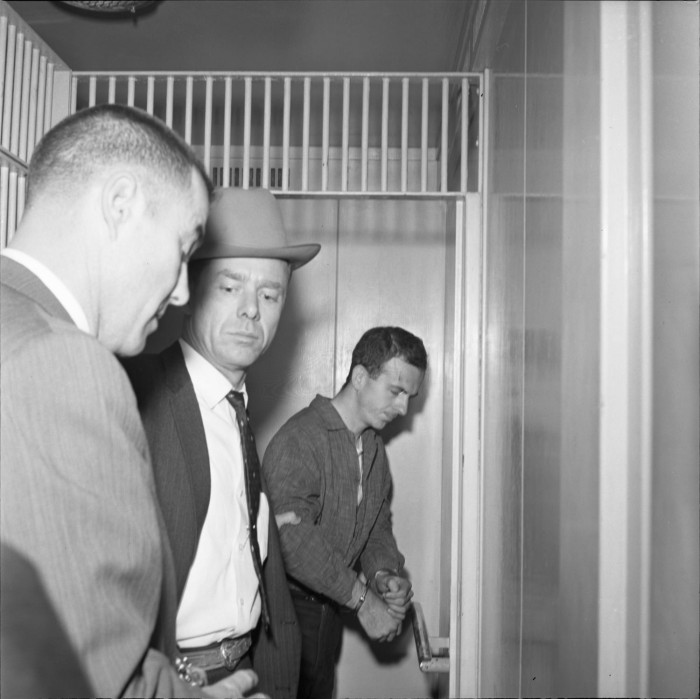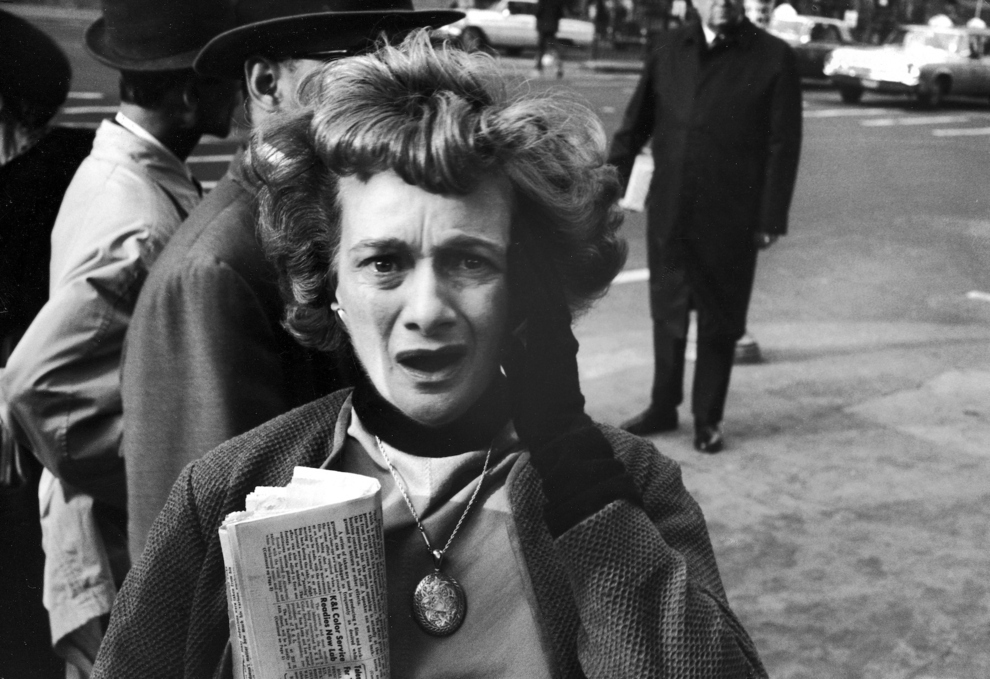
by Victoria Lucas
Tracking down the Dr. Who theme
After reading Mark Yon's column mentioning the British telly program "Doctor Who," I distracted myself from (shudder!) the assassination by trying to find out anything I could about that program, particularly the unique theme music (new music is my bag, you see).

My usual sources are the libraries at the University of Arizona (UA) and in downtown Tucson. When those turn up empty, I start in on my private network–folks I know. Someone mentioned that the music was supplied by the BBC's Radiophonic Workshop, who do all BBC sound effects and theme music. But how to find out more? And if it’s the music I’m interested in, how can I hear it? There appear to be no plans to broadcast "Doctor Who" in the US.
OK, now I’m right up against the wall and climbing as fast as I can, because I’m stubborn. (If you knew my family you’d know I come by it honestly.) And besides, I promised to write this column. Oh! My tape network. I’ve mentioned before, in connection with hearing a radio program I missed, that I’m part of a sort of round robin that sends reel-to-reel tape around for hearing, copying, etc. (I do sound and other services for local little theater–it comes in handy if there’s some effect I can’t produce or some music I need.) So I phoned my contact, who phoned his contact–etc.
A gift from London
To my utter surprise and relief, it turned out that there was a package waiting to be sent from England, and I am the ideal person to receive it and send it on. You know how composers are–well, maybe you don’t.

Music composition is not a lucrative profession, for the most part. It’s sort of like the few sports stars who occupy everyone’s attention, and everyone else who isn’t on one’s hometown team is ignored. This is the age of the 20th-Century Canon, in the sense that "classical" musicians put their faith in a slightly varying list (like a set of sacred books) of composers and music that symphonies play and national radio and television favor. When you go to a concert, leaving "pop" or jazz alternatives aside, you know you’re usually going to hear at least one of the four B’s (Bach, Brahms, Berlioz, Beethoven). And a few others, most 19th or early 20th century European "classical" music.. I’m tempted to add a fifth "B" for Borge, but he makes a living playing (not composing) "classical" music, with a few jokes on the side.

Victor Borge in concert 1957
If you don’t compose or play music that sounds like the items on that list, you will have to find some other way to make a living, or live very frugally, squeezing out a few dollars here or there from donations, commissions, or occasional gigs that pay actual money. Just ask my friend Barney Childs at UA, who holds a PhD in music composition from Stanford. He teaches English as an assistant professor and composes in his spare time. His music is often highly dissonant and doesn’t appeal to your average concertgoer, who expects dominant, consonant melodies presented in classical formats by musicians who, in turn, usually expect the same and may be so offended if their sheet music does not conform to what they learned in the conservatory that they will walk out or otherwise disrupt a concert. Finding performers who will play unusual music can be quite difficult, making electronic music, despite its complicated techniques, attractive, since often the only performer is the composer.

Barney Childs and his ever present pipe
And in this case the composer who is to receive the package is more or less homeless, sleeping on other people’s couches or floors and traveling when and where he is paid to perform. So I actually feel pretty good about inserting myself into this delivery process, quite aside from being able to listen to the very latest in (as it turns out) electronic music. I’m responsible for finding out where he is from the local contacts I was given (too much long-distance calling for folks in England) and sending it on. Best of all, the tape I just received and played has a sheet of (legible!) comments on the music and even some words about and a photograph of the performer, with her equipment.
Meet the maker

Delia Darbyshire on tape machines
According to the comments, it seems that someone by the name of Ron Grainer composed music for the "Doctor Who" theme. Another somebody–by the name of Delia Derbyshire (what a veddy British name that is!)–realized it as electronic music in the Workshop!
The anonymous writer also says that Derbyshire wasn't allowed to compose music on her job for the Workshop, but she was allowed to do "special sound by BBC Radiophonic Workshop," which apparently is anything she wants to do. What a job! But it sounds as it if was lot of trouble and some luck to get there, and some knocking around, because Derbyshire had a hard time finding anywhere she could use her degree in mathematics and music. For instance, she was told that Decca Records wouldn't employ women, and … well, whoever heard of a woman composer?

Clara Schumann
I wanted to compose too after I learned to transpose while studying piano, but I didn't know anybody who had heard of a woman composer, and that includes my mother and aunt, harpists who had performed in the concert circuit. My father was not supportive, although my mother always indulged me. Without specific encouragement to realize my dream, however, I saw my future stretching before me, always playing other peoples' music that for the most part bored me, and I didn't like that future. So I stopped studying music and started looking for some other way to make a living. (Mind you, I was 12, as you might see in my previous column.)

Composer Luciano Berio
Derbyshire, on the other hand, had an opportunity to work with Luciano Berio last year when they attended the famous Dartington Summer School in Devon, England, so she was able to hobnob with at least one VIP of new music decidedly not in the Canon. I wonder if this was the fulfillment of a dream for her. It would be for me.
Behind every great man…

Ron Grainer
There is a brief note in the comments that made me laugh aloud: Derbyshire is so clever that when Grainer heard her music for "Doctor Who" and delightedly asked, "Did I really write this?", she answered "Most of it."
The same page in the package shows a small drawing of the composer’s music described as "swoops," and nothing more. So there was a lot of room to improvise. Come to think of it, the lack of a staff and apparent use of graphic notation remind me of John Cage, who used a transparency with lines to overlay dots and lines in his "Fontana Mix." Talk about its being hard to find performers when your music is unusual, think of Cage’s predicament after the debut of his last year’s "4’ 33" after which many people consider him a joke! On the other hand, put yourself in the position of a classically trained musician confronted with that composition’s page of sheet music indicating three parts, each declaring only "Tacet" (musicianese for "silence"). Was Grainer "avant garde," too?
I have to wonder whether what Derbyshire meant by her remark about his composition was that the rest of "most of it" was written by her, or by her assistant Dick Mills, a sound engineer who I understand is responsible for sound effects for a programme (note British spelling) called "The Goon Show." Something tells me I would be surprised by the truth.

Dick Mills on the left
I can't imagine getting to England anytime soon–especially since I’m paying for the next leg of the journey for a piece of tape and its wrapping, a photo and a piece of paper, as well as some long distance charges. But maybe I'll get to San Francisco again before long, where there's a place I keep hearing about called the Tape Music Center. If I can’t make electronic music, maybe I can at least listen to it. This little piece I received today, which I had to use a lot of leader to bind to a reel for enough time to play it, is a delight!

![[December 5, 1963] A Composer After My Own Heart (A theme song for <i>Dr. Who</i>)](https://galacticjourney.org/wp-content/uploads/2018/12/631205delia_derbyshire-672x372.jpg)

![[November 22, 1963 cont.] Murder charge for Lee Harvey Oswald](https://galacticjourney.org/wp-content/uploads/2018/11/631123grief3-672x372.jpg)


![[November 7, 1963] This Performance Not Wholly Silence (John Cage and his art)](https://galacticjourney.org/wp-content/uploads/2018/11/631107cage1947-672x372.jpg)






![[October 4, 1963] A Story Turned Inside Out—the movie of <i>Burning Court</i>](https://galacticjourney.org/wp-content/uploads/2018/10/631005poster-474x372.jpg)



.jpg)


.jpg)
.jpg)








































